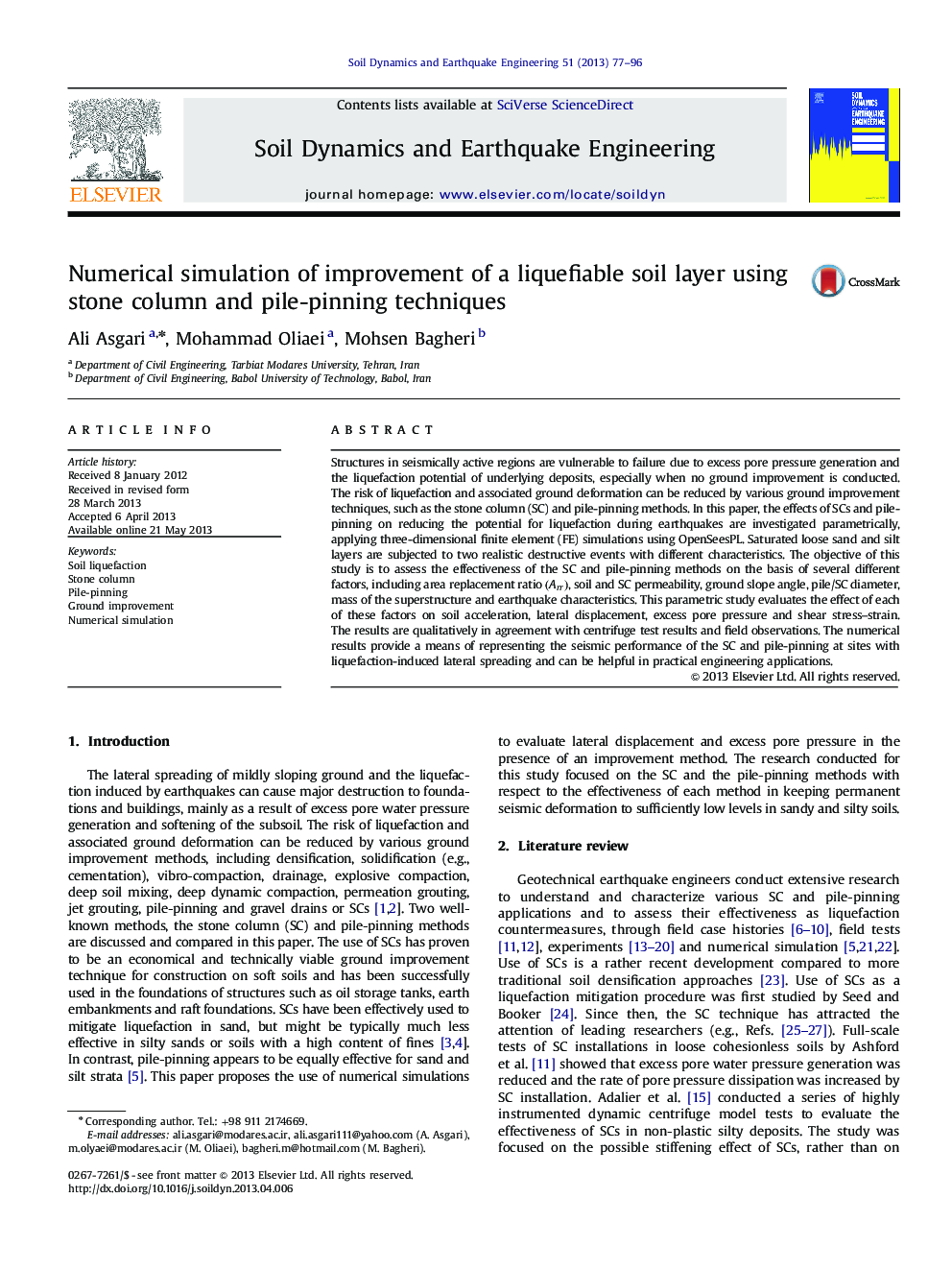| Article ID | Journal | Published Year | Pages | File Type |
|---|---|---|---|---|
| 304231 | Soil Dynamics and Earthquake Engineering | 2013 | 20 Pages |
•We modeled the stone column (SC) and pile-pinning in liquefiable soils to assess their effectiveness on the basis of several key factors.•High SC permeability decreases lateral displacement more effectively than increased area replacement ratio (Arr)(Arr) in sand.•Increased superstructure mass and ground slope decrease the excess pore pressure (EPP). Therefore, EPP cannot be enough by itself for evaluating liquefaction potential, hence the deformations should be examined.•Optimum diameter of pile-pinning/SC with constant ArrArr is a function of several factors, considering lateral displacement.
Structures in seismically active regions are vulnerable to failure due to excess pore pressure generation and the liquefaction potential of underlying deposits, especially when no ground improvement is conducted. The risk of liquefaction and associated ground deformation can be reduced by various ground improvement techniques, such as the stone column (SC) and pile-pinning methods. In this paper, the effects of SCs and pile-pinning on reducing the potential for liquefaction during earthquakes are investigated parametrically, applying three-dimensional finite element (FE) simulations using OpenSeesPL. Saturated loose sand and silt layers are subjected to two realistic destructive events with different characteristics. The objective of this study is to assess the effectiveness of the SC and pile-pinning methods on the basis of several different factors, including area replacement ratio (Arr)(Arr), soil and SC permeability, ground slope angle, pile/SC diameter, mass of the superstructure and earthquake characteristics. This parametric study evaluates the effect of each of these factors on soil acceleration, lateral displacement, excess pore pressure and shear stress–strain. The results are qualitatively in agreement with centrifuge test results and field observations. The numerical results provide a means of representing the seismic performance of the SC and pile-pinning at sites with liquefaction-induced lateral spreading and can be helpful in practical engineering applications.
